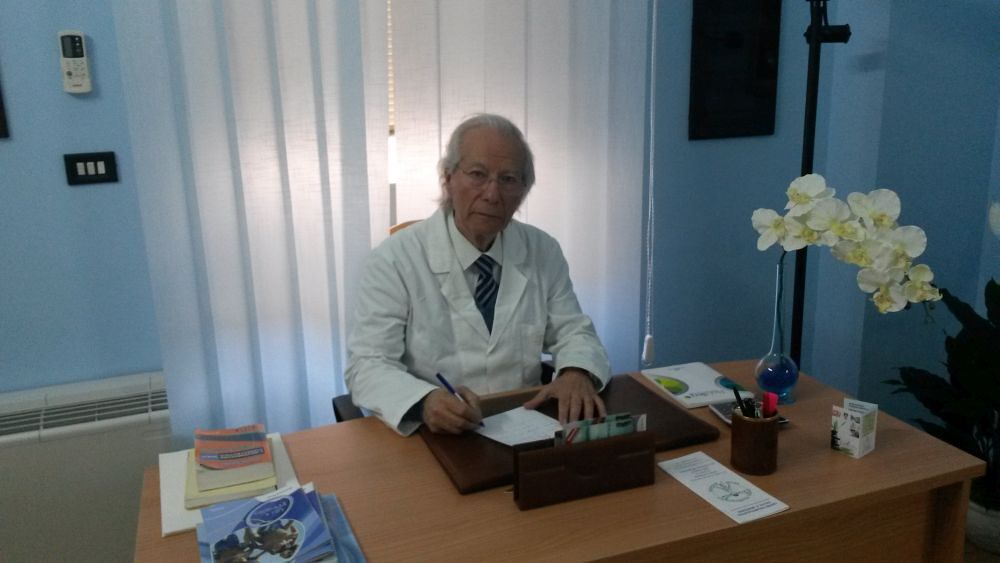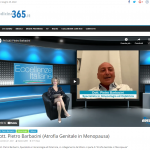For more than sixty years he has been concerned with the obstetric-gynecological and sexual health of women, first as an assistant and best heir to the late Professor Alessandro Perrucci in the San Camillo de Lellis hospital in Mesagne (of whose obstetrics and gynecology department he was the l last primary, before closing), then as primary at the Perrino hospital in Brindisi.
Now that he has been retired for several decades, Dr. Efisio Renato Poddi does not abandon the idea of continuing to dedicate to his medical specialty the professional passion that has animated him throughout his life and his best energies as an 84-year-old always projected towards the future. . With the “Progetto Percorso Donna”, conceived in concert with the Brindisi section of FEDER.S.P.eV. (Federation of Health Retirees – Doctors, Veterinarians and Pharmacists – Widows and Survivors) and with Aisa (an association that operates in the field of social and health voluntary service), promotes a therapeutic protocol based on oxygen and hyaluronic acid for the treatment of vulvo-vaginal atrophy, a protocol whose application, validated only in 2018 and not yet tested in southern Italy, represents an innovation of great scientific interest for the many women who suffer from this painful condition.
What does the project consist of and how was it born?
“The pandemic, by greatly decreasing clinical practice, has conciliated the study of many important but perhaps neglected issues. For about a year and a half I have been studying this new therapeutic protocol that allows the treatment of genitourinary syndrome in women, the main symptoms of which are vaginal dryness and vulvo-vaginal atrophy and lower urinary tract.
It is a disease that affects the external genital tract and the urinary organs, bladder and urethra, causing, among other things, dyspareunia (i.e. pain during sexual intercourse or inability to have it) and recurrent cystitis, which respond to antibiotic therapy only temporarily or do not respond at all.
Women suffer from it either by age (it occurs in pre-menopause and becomes more severe during and after menopause, i.e. after sixty-five years) or because they suffer from conditions in which medical therapies cause hypoestrogenism (for example some breast or gynecological cancers ). With the associations involved, which have made a considerable sum available, we will elect twenty women to whom we offer a free gynecological examination, which I personally take care of, and two treatments out of five at our expense ”.
What does hypoestrogenism involve at the genitourinary level?
“It involves a thinning of the epithelium and a reduced vascularity which, in turn, cause a weakness of the apparatus (hence cystitis) and a decrease in muscle tone, which causes pain during sexual intercourse and often even independently of relationships”.
Young women are excluded from this pathology, then?
“Absolutely no. In addition to cancer patients, young women are affected who suffer from infections of the vaginal introitus, vulvitis, vestibulitis, recurrent candidiasis. Our project, however, is not aimed at them, unless they are cancer patients operated on for breast cancer or uterus “.
Is it possible to estimate the number of women affected by this condition?
“These are important numbers: about 90% of women in their eighties suffer from it, while for women in menopause it is about 50%. Unfortunately, although the percentages are so high, very few women recognize the problem and ask for clarification: they do not confide in their partners, who should instead be the first to share this suffering, and do not ask for the opinion of the family doctor. nor of the gynecologist specialist.
This means that the problem is diagnosed when there is little to do, from the point of view of therapies. Instead, it is necessary to intervene before atrophy conditions the life, not only sexual, of the woman “.
Therefore, on the one hand it is difficult to recognize it as a pathology, on the other hand it is passively accepted because it is considered a normal consequence of age and of some particular conditions that decrease the estrogenic supply in the body.
“Unfortunately. In recent weeks, I happened to visit women who have always been ashamed to expose the pathology to both their partner and the doctor. I happen every day to receive disappointed, dissatisfied, embittered women who, out of shame, shut themselves up in pathology and do not live a full life. Here, as a gynecologist, I say: talk about it, do not assume that it cannot be cured, do not neglect the symptoms and trust your companions and your doctors ”.
How is this condition usually treated?
“Generally with long therapies, both local and systemic, based on estrogen, which however require a daily continuity to which the woman does not always lend herself. It must also be said that not all women can undergo it: breast or endometrial operations, for example, absolutely cannot take estrogen. In this case, the problem is stopped with lubricants, moisturizing and soothing creams, hyaluronic acid, or – in the most serious cases – laser therapy or radiofrequency therapies are used “.
The new protocol, called Caress Flow, however, on which therapies is it based?
“It is based on insufflations of high concentration oxygen (93%) and low molecular weight hyaluronic acid directly into the vaginal cavity, for the duration of a quarter of an hour. There are no contraindications of any kind, it is a completely painless treatment and is effective from the first administrations.
What is important to say is that, contrary to what happens with laser therapy and radiofrequency, the session does not require recovery times and the entire treatment ensures lasting results over time, even up to a year and in some cases up to a year and a half later. The treatments, including visits to apply, take place at the Di Summa hospital. The entire protocol lasts two and a half months, because the different treatments are administered two weeks apart “.
What is the purpose of the project?
The purpose of the project, in addition to treating the twenty selected women (a drop in the bucket, we realize), is to inform the rest of the female population that this disease is curable especially, if not only, with this new protocol. I am convinced of the goodness of this method and I hope that the message will get to women that we want to spread with the associations that take care of the project: you can intervene, it is not a problem that you have to put up with throughout your life, do periodic gynecological visits “.
In your opinion, what can be done in terms of communication and information to improve women’s awareness of their sexual health, not only in relation to vulvo-vaginal atrophy?
“We have to start from a long way off, it is a political discourse. Society, starting from schools, families, ASLs, including counseling centers, should take charge of developing awareness of their own body and the culture of health in women, from a very young age. I have always wanted to be a gynecologist: for more than sixty years I have been striving to encourage this awareness in my patients and I am not yet tired of working in the interest of women “.
Di Marina Poci per il7 Magazine
—————————–
Are you a professional? Do you deal with Female Pathologies?
TRY CARESS FLOW FREE for 1 MONTH in your Studio!
 Leggi tutti i dettagli della promozione >> clicca QUI
Leggi tutti i dettagli della promozione >> clicca QUI





